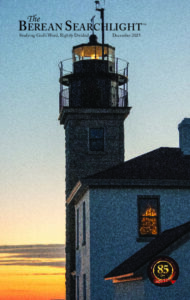Summary:
God had given these two and a half tribes permission to live on the wrong side of the Jordan, so it seemed to make sense to have their own altar (v.10). But the other tribes were willing to go to war to stop them (v.11,12) because the law said all offerings had to be made on the altar by the tabernacle (Lev.17:8,9). Allowing other altars led to worshipping other gods alongside the worship of God (Amos 5:25-27).
But the nine and a half tribes only heard about this new altar (Josh.22:11,12), and their law said they must investigate this rumor thoroughly before going to war (Deut.13:12-15). So they sent Phinehas to check it out (Josh.22:13,14), the man who slew a pregnant woman for introducing idolatry to Israel (Num.25:1-10). He asked them what they thought they were doing (Josh.22:15,16), and then reminded them that God considered idolatry such a heinous sin that He slew 24,000 people for it in Numbers 25 (v.17,18). Then he graciously suggested that perhaps they’d been influenced by their idolatrous neighbors on the wrong side of the river, and advised them to move to their side (Josh.22:19). Then he reminded them of the time a man in Israel sinned, and God took it out on all the Jews (v.20), and then gave them a chance to explain what they’d done.
They exclaimed, as it were, “If we did this to rebel against God, He knows, and we’ll let Him kill us” (v.21,22). In-stead, they built the altar to “witness” (v.24-27) to the children of the other tribes. They knew someday they’d look down on those two and a half tribes who lived on what they’d perceive to be the wrong side of the river and say, “You can’t worship our God. You don’t live by us, so you must not know anything about our God.” Verse 25 says that would make them stop fearing the Lord, thinking, “If God’s people don’t want us, why should we want God?” To keep that from happening, they built that altar as a witness that they did know about Israel’s God, for they made it according to the specifications God gave Moses for Israel’s altar. Verse 27 says it was a witness to the fact that they’d continue to do the service of God “before Him,” i.e., that they’d continue to “come before the LORD” to bring their sacrifices to God in the tabernacle (Lev.15:14). Remember, God lived in that tabernacle between the cherubim atop the ark (Isa.37:16).
How would building an altar witness they weren’t sacrificing on it? It was overlaid with brass (Ex.27:1,2), and brass tarnishes if fires are burned on it! An untarnished altar testified they weren’t burning offerings on it.
When the two and a half tribes said they made their altar according to the “pattern,” they meant the pattern God showed Moses (Heb.8:5). They even used the word “witness” to show they knew what to call their altar. God called the tabernacle that contained His altar “the tabernacle of witness” to differentiate it from the tabernacle where the Jews worshipped God and false gods (Acts 7:42-44).
The two and a half tribes finished their explanation by swearing an oath (Josh.22:29). The Jews who entered the Promised Land here are types of future Jews who’ll enter the kingdom, and unsaved Jews in that day will look down on others who live in other parts of the world. So altars of witness like this one are going to spring up all over the world in that day. Remember, the kingdom will start with all saved people, but then they’ll have children, the majority of whom won’t believe and be saved (cf.Rev.20:7-9).
Some commentaries aren’t satisfied with this explanation, and think the two and a half tribes were wrong to build the altar, but Phinehas was satisfied with it (Josh.22:30), and so was the rest of Israel (Josh.22:31-34). Finally, God put His altar at the “door” of the tabernacle where He lived to teach the Jews they couldn’t get in the door to see God without the blood of an animal on that altar. That teaches us we need the sacrifice of the blood of Christ to get in the door of heaven.




